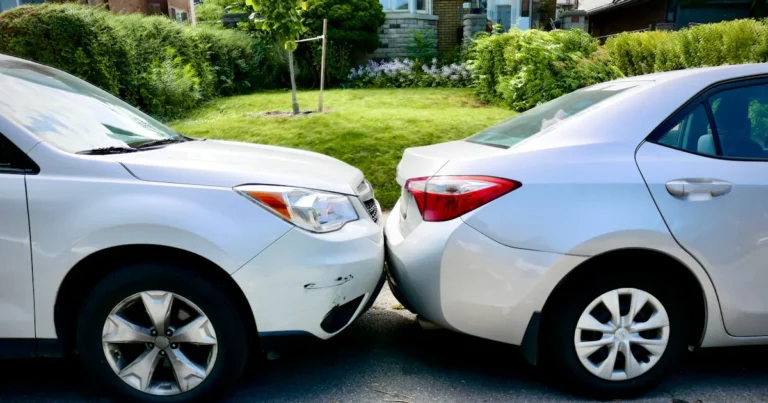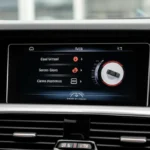Support our educational content for free when you purchase through links on our site. Learn more
Can I Negotiate the Terms of a Car Lease? 12 Expert Tips (2025) 🚗
Thinking a car lease is a take-it-or-leave-it deal? Think again! Many drivers don’t realize that negotiating a car lease is not only possible but essential if you want to save big bucks and drive away happy. Our team at Car Leases™ has been in the trenches, battling dealership tactics and uncovering insider secrets that can slash your monthly payments and fees without sacrificing the ride you want.
Take Mike’s story, for example: by zeroing in on the car’s actual price rather than the flashy monthly payment, he saved hundreds over his lease term on a sleek Audi Q5. Intrigued? We’ll show you exactly how to negotiate every key term—from the capitalized cost and money factor to mileage limits and pesky fees. Plus, we reveal the down payment trap that could cost you thousands if you’re not careful. Ready to become a lease negotiation ninja? Let’s dive in!
Key Takeaways
- You can and should negotiate key lease terms, especially the capitalized cost (car price) and money factor (interest rate).
- Avoid large down payments; opt for “sign and drive” leases to protect your cash.
- Mileage limits and fees are negotiable—know your driving habits and ask for adjustments upfront.
- Timing your lease negotiation near month-end or quarter-end can give you leverage.
- Be prepared to walk away if the deal doesn’t meet your expectations—there are always better offers.
Ready to master the art of car lease negotiation? Keep reading for 12 detailed tips and real-world stories that will empower you to get the best deal possible in 2025!
Table of Contents
- ⚡️ Quick Tips and Facts About Negotiating Car Leases
- 🚗 Understanding the Basics: What Is a Car Lease and How Does It Work?
- 🔍 The Anatomy of a Car Lease: Key Terms You Need to Know
- 💬 Can You Negotiate the Terms of a Car Lease? The Truth Revealed
- 1️⃣ How to Negotiate the Capitalized Cost (Price) Like a Pro
- 2️⃣ Mastering the Money Factor: Lower Your Lease Interest Rate
- 3️⃣ Negotiating the Lease Term and Mileage Limits to Suit Your Lifestyle
- 4️⃣ Fees and Add-Ons: What You Can and Can’t Negotiate
- 5️⃣ The Down Payment Debate: To Pay or Not to Pay?
- 🎯 Insider Tips: How to Prepare and Win at Lease Negotiations
- 📊 Comparing Leasing vs. Buying: Which Is Better for You?
- 🛠️ What Happens at Lease-End? Negotiating Buyout and Return Terms
- 🚦 Common Pitfalls and How to Avoid Them When Negotiating a Lease
- 📞 When to Walk Away: Knowing Your Limits in Lease Negotiations
- 💡 Real Stories: Our Team’s Most Memorable Lease Negotiation Wins and Fails
- 📚 Recommended Resources and Tools for Lease Negotiation
- 📝 Conclusion: Sealing the Deal with Confidence
- 🔗 Recommended Links for Further Reading
- ❓ Frequently Asked Questions About Car Lease Negotiations
- 📑 Reference Links and Sources
Here is the main content for your blog post, crafted by the experts at Car Leases™.
⚡️ Quick Tips and Facts About Negotiating Car Leases
Welcome, fellow car lover! You’ve got your eye on a shiny new ride, and the allure of a low monthly payment from a lease is calling your name. But then, the big question hits you: “Can I actually negotiate this deal, or am I stuck with what the dealer offers?” Let’s cut to the chase: YES, you absolutely can and should negotiate the terms of a car lease!
Here at Car Leases™, we’ve spent countless hours in the dealership trenches, and we’re here to spill the secrets. Think of a lease agreement not as a stone tablet of commandments, but as the opening offer in a friendly (but firm!) conversation. Many people don’t realize that several key parts of a Car Leases agreement are flexible. One of our team members, Mike, once shaved a significant amount off his monthly payment on a new Audi Q5 simply by focusing on one number—and it wasn’t the monthly payment. What was it? Stick around, and we’ll tell you exactly what he did.
Before we dive deep, here’s a quick-reference table to get your engine started.
| Quick Tip / Fact 📝 | Why It Matters 🧐 – | Always Negotiate the Price First | The single most important factor is the vehicle’s price, or Capitalized Cost. “Some customers make the mistake of getting hung up on monthly payment size, which can be reduced in ways that may not serve your best interest.” Focusing on the total price ensures a better deal overall. – | Say NO to Down Payments | It’s tempting to put money down to lower your monthly bill, but don’t! As the first YouTube video in this article explains, if your car is stolen or totaled, you won’t get that cash back. GAP insurance covers the car, not your down payment. A “zero drive-off” deal is the smartest move. – | Know the Lingo | Dealers use specific terms like Money Factor (lease interest rate) and Residual Value (the car’s predicted worth at lease-end). Understanding these terms is essential before you even step into the dealership. – | Timing Can Be Everything | Try to shop near the end of the month, quarter, or year. “This is when dealers traditionally have more pressure to meet quotas, so it may be a good time to buy a car.” Their urgency can become your leverage. – | Some Fees Are Set in Stone (Mostly) | While you can negotiate many things, the Residual Value is almost always non-negotiable as it’s set by the lender based on industry data. However, fees like the Disposition Fee might be waived if you lease another car from the same brand. –
🚗 Understanding the Basics: What Is a Car Lease and How Does It Work?
Before you can negotiate like a pro, you need to understand the game you’re playing. Think of leasing a car like renting a really cool, really fast apartment. You get to use it for a set period (the lease term), you have rules to follow (like mileage limits), and you make monthly payments. At the end of the term, you simply hand back the keys. You’re not buying the whole building; you’re just paying to live in it for a while.
In technical terms, a car lease is a long-term rental agreement where you pay for the depreciation of the vehicle—the difference between its brand-new value and its expected value at the end of the lease—plus interest and fees. This is why lease payments are often lower than loan payments for buying the same car. You’re only paying for the portion of the car’s life that you’re using. For a deeper dive into the fundamentals, check out our guides on Car Lease Basics.
The process is simple:
- Choose Your Car: Pick the make and model that fits your style and needs.
- Agree on Terms: This is the negotiation phase where you’ll discuss price, term length, mileage, etc.
- Sign the Paperwork: Once you’re happy with the deal, you’ll sign the lease agreement.
- Drive and Enjoy: You get to drive a new car for 2-4 years!
- Lease-End: Return the vehicle, purchase it, or lease a new one.
🔍 The Anatomy of a Car Lease: Key Terms You Need to Know
Alright, class is in session! To win your negotiation, you need to speak the language. The dealership’s finance office can feel like an intimidating place, but once you understand these key terms, you’ll hold all the cards.
| Term | What It Really Means – | Capitalized Cost (Cap Cost) | The negotiated price of the car. This is your #1 target for negotiation. It’s the agreed-upon value of the vehicle plus any fees. – | Residual Value | The car’s predicted wholesale value at the end of the lease. This is set by the lender and is almost never negotiable. A higher residual value is good for you, as it means lower monthly payments. – | Money Factor (or Rent Charge) | This is essentially the interest rate, expressed as a tiny decimal (e.g., 0.00150). It’s a key part of your monthly payment and is often negotiable, especially with a good credit score. We’ll show you how to convert this to a familiar APR later! – | Acquisition Fee | An administrative fee charged by the leasing company to set up the lease. Some sources say it’s not negotiable, while others suggest it is. Our take? It’s worth asking about, as dealers can sometimes mark it up for profit. – | Disposition Fee | A fee for cleaning and prepping the car for resale after you return it. You can often get this waived upfront, especially if you’re a repeat customer. –
Understanding these terms is half the battle. For more on how these numbers play together, explore our resources on Auto Financing Options.
💬 Can You Negotiate the Terms of a Car Lease? The Truth Revealed
So, let’s settle this once and for all. Can you negotiate a car lease? A resounding YES! 🥳
The key is knowing what to negotiate. While you can’t change the fundamental math set by the bank (like the residual value), you have significant influence over the numbers that go into that math.
Here’s a simple breakdown:
✅ What You Can (and Should) Negotiate:
- The Capitalized Cost: This is the big one. It’s the price of the car, and it’s almost always negotiable.
- The Money Factor: You can often get a lower “interest rate,” especially if you have a strong credit score.
- Mileage Allowance: Need more than the standard 12,000 miles per year? You can negotiate a higher limit upfront.
- Trade-in Value: If you’re trading in a vehicle, treat it as a separate transaction and negotiate the price to get the most value.
- Certain Fees: You may be able to negotiate or waive fees like the disposition fee or even the acquisition fee.
❌ What’s Generally Off-Limits:
- The Residual Value: This is the lender’s prediction of the car’s future value, and it’s calculated using industry data, leaving little to no room for change.
- Taxes and Registration Fees: Sorry, Uncle Sam always gets his cut. These are set by the government.
- Core Penalties for Default: Things like repossession clauses for non-payment are standard legal protections for the lender and aren’t up for debate.
Now, let’s get into the nitty-gritty of how to tackle each of these negotiable points.
1️⃣ How to Negotiate the Capitalized Cost (Price) Like a Pro
This is where you can make the biggest impact on your monthly payment. Remember our teammate Mike? This was his secret weapon. He completely ignored the salesperson’s talk about “affordable monthly payments” and focused on one thing: the total price of the car.
The Capitalized Cost, or “cap cost,” is just a fancy term for the vehicle’s negotiated selling price. Your goal is to get this number as low as possible.
Step-by-Step Guide:
- Do Your Homework: Before you talk to a dealer, research the fair market value of the exact car you want. Use resources like Kelley Blue Book or Edmunds to find the Manufacturer’s Suggested Retail Price (MSRP) and, more importantly, the invoice price (what the dealer likely paid for the car).
- 👉 Shop Around: “Getting quotes from multiple dealers may give you a little extra leverage in negotiations.” Contact the internet sales departments of several dealerships and ask for their best price on the vehicle. This creates competition for your business.
- Negotiate the Price, Not the Payment: This is the golden rule. As SoFi’s experts advise, “Rather than negotiating the payment, negotiate to lower the price of the vehicle.” Tell the salesperson you want to agree on the car’s price before discussing leasing at all.
- Use Your Leverage: Once you have quotes from other dealers, you can confidently make a fair offer. Start below the invoice price and be prepared to meet somewhere in the middle.
2️⃣ Mastering the Money Factor: Lower Your Lease Interest Rate
The Money Factor sounds complicated, but it’s just the lease’s interest rate in disguise. It’s presented as a small decimal, like 0.00175. Here’s a pro tip to make it make sense:
To convert the Money Factor to an APR, multiply it by 2400. Example: 0.00175 x 2400 = 4.2% APR
Dealers can and do mark up the money factor from the “buy rate” (the rate the bank offers them) to make a profit. Your job is to get it as close to the buy rate as possible.
How to Negotiate It:
- Know Your Credit Score: Your Credit Score and Car Leasing are directly linked. A higher score qualifies you for the best rates. Check your score before you shop.
- Ask Directly: When you’re in the finance office, ask, “What is the money factor on this lease, and is it the buy rate?”
- Research in Advance: Online forums like the Edmunds Lease Forums can be a goldmine. Users often post the current buy rate money factors for different vehicles and manufacturers.
3️⃣ Negotiating the Lease Term and Mileage Limits to Suit Your Lifestyle
A standard lease is often 36 months with 10,000 or 12,000 miles per year. But “standard” doesn’t work for everyone.
- Mileage: Be brutally honest with yourself about how much you drive. “Take an honest look at your mileage needs and compare that to what’s offered in the lease.” If you know you’ll drive 15,000 miles a year, it’s far cheaper to pay for those extra miles upfront in your lease contract than to pay the penalty (often around $0.25 per mile) at the end.
- Lease Term: While a longer term might lower your monthly payment, be careful. You don’t want the lease term to outlast the car’s bumper-to-bumper warranty (typically 36 months). A 24 or 36-month lease is usually the sweet spot.
4️⃣ Fees and Add-Ons: What You Can and Can’t Negotiate
Here’s where dealers can pad the bill. Let’s break down the common fees:
| Fee / Add-On | Our Expert Take – | Acquisition Fee | 🧐 Ask About It. This is a bank fee for starting the lease. As the video summary notes, dealers can mark this up. Ask if they’ve added to the bank’s base fee and request they don’t. – | Disposition Fee | ✅ Negotiate This! This is a fee at the end of the lease. Ask the dealer to waive it upfront, especially if you hint you might lease from them again. – | Documentation Fee (Doc Fee) | 😡 The Most Annoying Fee. This is pure dealer profit for paperwork. Some states cap this fee, but in others, it can be high. You can’t always eliminate it, but you can try to negotiate it down or ask the dealer to reduce the car’s price to offset it. – | Extended Warranties | ❌ Just Say No. As the featured video points out, most new car leases (e.g., 36 months/36,000 miles) are fully covered by the manufacturer’s warranty. An extended warranty is almost always unnecessary and a waste of money. –
5️⃣ The Down Payment Debate: To Pay or Not to Pay?
We’re going to be blunt: DO NOT put a significant down payment on a leased car.
It’s called a “Capitalized Cost Reduction,” and dealers love it because it makes the monthly payment look incredibly low. But it’s a trap! Here’s why:
Every lease should come with GAP (Guaranteed Asset Protection) Insurance. This covers the difference between what your insurance company says the car is worth and what you still owe on the lease if it’s stolen or totaled.
Let’s say you put $3,000 down on a new Honda CR-V. A month later, the car is totaled in an accident.
- The GAP insurance pays the leasing company the remaining balance on the lease.
- Your $3,000 down payment? It’s gone. Vanished. You will never see it again.
As the expert in our featured video strongly advises, opt for a “zero drive-off” or “sign and drive” lease. This means you only pay the first month’s payment and essential fees (like registration) at signing. Keep your cash in your bank account, not the dealer’s.
🎯 Insider Tips: How to Prepare and Win at Lease Negotiations
Preparation is everything. Walking into a dealership without a plan is like going into a snowball fight without gloves—you’re going to get cold, fast.
Do Your Homework 📚
- Know the Car: Research the specific trim and options you want.
- Know the Numbers: Find the invoice price, current money factor, and any available manufacturer rebates or incentives.
- Know Your Budget: Determine what you can comfortably afford for a total lease cost, not just a monthly payment.
Shop Around 💻
- Contact at least three dealerships.
- Use email to get offers in writing. This prevents them from changing the numbers when you arrive.
- Check out our Latest Car Lease Deals to see what’s hot right now.
Timing is Everything ⏰
- As mentioned, end-of-month or end-of-quarter is prime time. Dealers are scrambling to hit sales goals and are more likely to make a deal.
- Weekdays are often less busy than weekends, giving you more of the salesperson’s attention.
Maintain the Right Attitude 😎
- Be polite, professional, and confident. A good attitude can go a long way.
- Remember, this is a business transaction, not a personal favor. It’s okay to ask for a better deal.
- Be prepared to walk away. If the numbers don’t feel right, they probably aren’t.
📊 Comparing Leasing vs. Buying: Which Is Better for You?
Is leasing even the right move for you? It’s a fantastic option for many, but it’s not for everyone. Here’s a quick comparison to help you decide.
| Aspect | Leasing a Car 🚗 – | Buying a Car 🏠 – | Pros | ✅ Lower monthly payments.
✅ Drive a new car every few years.
✅ Always under warranty.
✅ Fewer maintenance headaches. – | ✅ You own the asset and build equity.
✅ No mileage restrictions.
✅ Freedom to customize or sell.
✅ Cheaper in the very long run (once the loan is paid off). – | Cons | ❌ No ownership or equity.
❌ Mileage limits and wear-and-tear charges.
❌ Restrictions on customization.
❌ You’ll always have a car payment. – | ❌ Higher monthly payments.
❌ Responsible for all maintenance after the warranty ends.
❌ Value depreciates over time.
❌ Larger upfront cost (down payment). –
For more help deciding, see our articles on Auto Financing Options.
🛠️ What Happens at Lease-End? Negotiating Buyout and Return Terms
The fun doesn’t stop when your lease is up! You have options, and yes, you can even negotiate here, too.
- Return the Car: This is the most common option. You’ll have a pre-return inspection to assess any “excess wear and tear.” Dings, scratches, and worn tires can cost you. Pro Tip: It’s often cheaper to fix minor issues yourself before the inspection than to pay the dealer’s inflated prices.
- Buy the Car: If you’ve fallen in love with your car, you can purchase it for the buyout amount specified in your contract. While some sources say this price is negotiable upfront, it can be difficult. However, you can sometimes negotiate the price at the end of the lease, especially if the car’s market value is lower than the buyout price.
- Trade It In: If your car is worth more than the buyout amount, you have positive equity! You can use this equity as a down payment on your next lease or purchase.
🚦 Common Pitfalls and How to Avoid Them When Negotiating a Lease
We’ve seen it all, and we want to help you avoid the common traps that can turn a great deal sour.
- ❌ Focusing only on the monthly payment. This is the #1 mistake. Dealers can lower the payment by extending the term or asking for a huge down payment, costing you more in the long run.
- ❌ Not knowing your numbers. Walking in unprepared is an invitation to overpay. Do your research on the car’s price and the current lease programs.
- ❌ Underestimating your mileage. Be realistic. Those overage fees are painful and can add thousands to your total cost.
- ❌ Falling for the “add-ons” pitch. Nitrogen in the tires, fabric protection, VIN etching… you almost never need these high-profit items. Just say no.
- ❌ Not reading the fine print. Before you sign anything, read every line. “If you come across anything you have questions or concerns about, it’s best to have the dealer clarify these for you before you formalize your agreement.”
📞 When to Walk Away: Knowing Your Limits in Lease Negotiations
The most powerful tool you have in any negotiation is the ability to walk away. If the deal doesn’t feel right or the salesperson is using high-pressure tactics, it’s time to leave.
As the experts at Finn wisely state, “If you get the feeling something just doesn’t feel right, don’t hesitate to remove yourself from the situation. No lease deal is worth compromising your position.”
Red Flags That Mean It’s Time to Go:
- They won’t give you a straight answer on the capitalized cost or money factor.
- They refuse to put an offer in writing.
- They keep changing the numbers on you.
- They pressure you to make a decision right now.
There are always other cars and other dealerships. A great deal is worth waiting for.
💡 Real Stories: Our Team’s Most Memorable Lease Negotiation Wins and Fails
The Win: Sarah’s Jeep Grand Cherokee Victory Sarah wanted a new Grand Cherokee, a very popular SUV. She knew dealers wouldn’t be giving them away. So, she emailed five local dealerships with the exact trim and color she wanted and asked for their best “out-the-door” price on a 36-month, 12,000-mile lease. Three responded with quotes. She took the lowest quote and asked the dealership closest to her home if they could beat it. They couldn’t beat it, but they matched it, saving her a 45-minute drive and getting her the exact deal she wanted without hours of haggling. It was a masterclass in preparation and letting dealers compete for her business.
The Fail: Tom’s Money Factor Mistake Early in his career, our writer Tom was so focused on negotiating the price of a sporty BMW 3 Series that he forgot to ask about the money factor. He got a great discount on the cap cost and felt like a champion… until he got home and ran the numbers. He realized the dealer had marked up the money factor significantly, eating away at most of the savings he had fought so hard for. It was a tough lesson, but one he never forgot: You have to negotiate all the key parts of the deal.
📚 Recommended Resources and Tools for Lease Negotiation
Knowledge is power, and these tools will make you a negotiation superhero.
- Pricing and Values:
- Kelley Blue Book (KBB.com): The gold standard for checking a car’s fair market value and your trade-in’s worth.
- Edmunds.com: Excellent for reviews, lease calculators, and forums where you can find current money factors and incentives.
- Lease Calculators: Search for online “car lease calculators” to run the numbers yourself before you go to the dealership. This helps you spot any discrepancies.
- Manufacturer Websites: Always check the official brand websites (e.g., Ford, Toyota) for special offers. They often have the best-subsidized lease deals, especially for popular models or new Electric Vehicle Leases.
Ready to start shopping? Compare real-time lease offers on these platforms:
- 👉 Shop the latest deals on: TrueCar | Edmunds | Auto Trader
📝 Conclusion: Sealing the Deal with Confidence

So, can you negotiate the terms of a car lease? Absolutely! The key takeaway from our deep dive is that knowledge is your most powerful tool. By understanding the essential lease terms—especially the capitalized cost and money factor—you can confidently negotiate a deal that suits your budget and lifestyle. Remember Mike’s story? Focusing on the car’s price rather than the monthly payment saved him hundreds over the lease term. That’s the kind of savvy negotiation we want for you.
While some elements like residual value and taxes are mostly set in stone, many other aspects—fees, mileage limits, and even the money factor—offer room for negotiation. Don’t fall for the trap of a big down payment; instead, opt for a “sign and drive” lease to keep your cash liquid and protected.
Our team’s real-world experiences show that preparation, patience, and a willingness to walk away are your best allies. Whether you’re eyeing a luxurious Audi Q5, a rugged Jeep Grand Cherokee, or a reliable Honda CR-V, the negotiation principles remain the same.
Now that you’re armed with insider tips, key terms, and negotiation strategies, you’re ready to hit the dealership floor with confidence. So, what are you waiting for? Go get that deal—and drive off happy! 🚗💨
🔗 Recommended Links for Further Reading & Shopping
Ready to shop or research more? Check out these trusted platforms for the latest lease offers and detailed info on the models we mentioned:
-
Audi Q5:
TrueCar | Edmunds | Audi Official Website -
Jeep Grand Cherokee:
TrueCar | Edmunds | Jeep Official Website -
Honda CR-V:
TrueCar | Edmunds | Honda Official Website
For more expert insights and current offers, explore our categories:
Car Lease Basics | Latest Car Lease Deals | Electric Vehicle Leases | Auto Financing Options | Credit Score and Car Leasing
❓ Frequently Asked Questions About Car Lease Negotiations
What lease terms are negotiable when leasing a car?
Negotiable terms typically include:
- Capitalized Cost (Price of the Car): The most impactful number to negotiate. Lowering this reduces your monthly payments.
- Money Factor (Lease Interest Rate): You can often negotiate this, especially with a strong credit score.
- Mileage Allowance: You can request higher mileage limits upfront to avoid costly penalties later.
- Trade-in Value: If trading in a vehicle, negotiate its value separately.
- Certain Fees: Disposition fees and sometimes acquisition fees can be waived or reduced.
Non-negotiable terms generally include residual value, taxes, and registration fees, as these are set by lenders or government agencies.
How can I negotiate a lower monthly payment on a car lease?
Focus on negotiating the capitalized cost rather than just the monthly payment. Dealers may try to lower monthly payments by extending the lease term or requiring a large down payment, which can cost you more overall. Also, negotiate the money factor to get a better interest rate. Lastly, choose a mileage allowance that matches your driving habits to avoid excess mileage fees.
Is it possible to negotiate the mileage limit on a car lease?
Yes! The mileage limit is often negotiable. Standard leases typically offer 10,000 to 12,000 miles per year, but if you expect to drive more, ask for a higher mileage allowance upfront. This usually increases your monthly payment slightly but saves you from expensive excess mileage fees at lease-end.
Can I negotiate the down payment on a car lease?
You can negotiate the amount of your down payment (capitalized cost reduction), but we strongly advise against putting a large down payment on a lease. If the car is stolen or totaled, you won’t get that money back. Instead, opt for a “sign and drive” lease with minimal upfront costs and rely on GAP insurance for protection.
What strategies help in negotiating better lease deals?
- Do your research: Know the invoice price, money factor, and current incentives.
- 👉 Shop multiple dealers: Use competing offers as leverage.
- Negotiate price first: Settle on the capitalized cost before discussing monthly payments.
- Ask about fees: Request waivers for disposition or acquisition fees.
- Time your purchase: End of month or quarter often yields better deals.
- Be ready to walk away: Don’t settle for a deal that doesn’t feel right.
Are there fees in a car lease that I can negotiate?
Yes, some fees are negotiable or waivable:
- Disposition Fee: Often negotiable or waived if you lease or buy another vehicle from the same brand.
- Acquisition Fee: Sometimes marked up by dealers; ask for it to be reduced or waived.
- Documentation Fee: Usually dealer-imposed and varies by state; try negotiating or offsetting with a price reduction.
Other fees like taxes and registration are fixed and non-negotiable.
How does negotiating the residual value affect my car lease?
Residual value is almost always non-negotiable because it’s set by the leasing company based on industry data and expected depreciation. A higher residual value lowers your monthly payments but may increase the buyout price at lease-end. While you can’t usually change it, understanding it helps you evaluate if the lease is a good deal.
📑 Reference Links and Sources
- Chase: How to Negotiate a Car Lease
- Finn: How to Negotiate a Car Lease
- SoFi: 8 Tips for Negotiating a Car Lease
- Kelley Blue Book
- Edmunds Lease Calculator and Forums
- Audi Official Website – Q5
- Jeep Official Website – Grand Cherokee
- Honda Official Website – CR-V
For more expert advice and the latest lease deals, visit Car Leases™.





